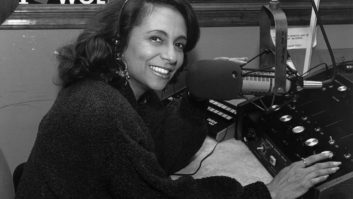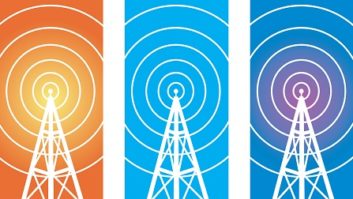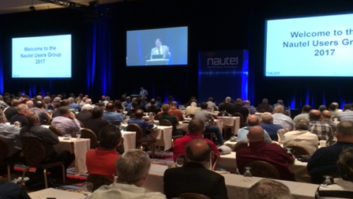College basketball coaching legend John Wooden said he defined success as “the peace of mind obtained only in the self-satisfaction of knowing that you made the effort to become the best of which you’re capable.”
AM broadcasters in this country are doing the best they can to raise ratings and increase revenue as they battle for listeners who have ever-increasing entertainment options. Some AM stations, in large and small markets alike, are struggling. However, many also appear to be thriving. Here are four.
WGN(AM) in Chicago is a success no matter how you define it. Consistently ranked in the top two or three stations in the nation’s third-largest radio market, the Tribune Broadcasting station drew in $48.5 million in revenue in 2006, according to BIA Financial Networks.
“We thrive because of our strong commitment to live/local programming 24/7,” said Tom Langmyer, general manager of WGN. “As AM operators, we all must recognize the potential of providing local content.”
50 kW Midwest blowtorch
Tribune, which owns 24 TV stations and only one radio station, isn��t afraid to invest for local programming to ensure success, Langmyer said.
On the air since the 1920s, WGN’s 50 kW signal can be heard across the Midwest, but its focus has always been the Chicagoland area. The station features local on-air personalities, a big news department and all the important service elements, Langmyer said.
“AM stations are doing spoken-word formats. I believe that is the big advantage we have over FM. They play music and are going to be very challenged to create content that can’t be easily duplicated on many platforms. Now is really the time for AM operators to develop more local programming and specialized content,” Langmyer said.
WGN claims to be the overall revenue market leader in Chicago, despite “struggling the past few years as most major markets have,” Langmyer said. The station also airs an HD Radio signal.
“HD does improve the sound quality of AM, and that is a very good thing. However, the AM band still has some of the same limitations it always has had. Regardless of the audio quality enhancements HD gives us, there is no fix to easily receiving AM radio inside buildings and in other areas. There are still challenges to overcome,” Langmyer said.
WGN is home to the Chicago Cubs and typically ranks in the top three radio stations in Chicago, Langmyer added, averaging around 1 million actual listeners in the Metro per week, according to Arbitron.
By contrast, Galesburg, Ill., is a city of just over 30,000 people that sits approximately 200 miles southwest of Chicago. It is home to WGIL(AM), named the 2007 Small-Market Radio Station of the Year by the Illinois Broadcasters Association. It’s the kind of station you would expect to broadcast music synchronized to that city’s fireworks display, and it did just that for the Fourth of July this year.
“WGIL has been quite successful for almost 70 years. And as with most successful AM stations, our heritage has been a very important part of our success. However, we realize that we cannot rely on that to guarantee any future success,” said Roger Lundeen, general manager for Galesburg Broadcasting Company, which also owns three FM stations in the city.
WGIL is a news/talk/sports station with a big commitment to local news, Lundeen said. The station carries some nationally syndicated shows, but focuses on community broadcasting.
“We are committed to local news and some local agricultural programming. We do 36 local newscasts per day,” Lundeen said, a former radio chief engineer and current SBE member.
Commercials on WGIL typically run around $25 per unit for a short-term schedule, Lundeen said.
‘Radio malpractice’
“We can quantify success not only from our quarterly revenue, but also from long-term sales success. So many stations today commit ‘radio malpractice’ by selling clients short-term schedules or promotions that are simply not in the best interest of the advertiser,” Lundeen said.
“When it doesn’t work they just move onto another client. Well, in a small market you can run out of advertisers with this short-term thinking. We try to establish relationships with clients,” Lundeen said.
The AM bandwidth discussion is a concern even in small radio markets, Lundeen said, adding that he is a believer in Clear Channel’s call to reduce AM bandwidth to 5 kHz to help reduce first adjacent interference issues.
“Realistically, we are wasting some bandwidth that nobody is hearing. It is even more important now with the recent authorization of nighttime IBOC,” Lundeen said.
Lundeen cited the example of his wife’s recent trip to the local new car dealer as he tagged along to listen to car stereos.
“Everything I heard was certainly less than 5 kHz (receivers). Most were more like 3 kHz,” he said.
Lundeen handles engineering duties for his group along with another full-time engineer in Galesburg. The company also owns four stations in Burlington, Iowa.
WNNW(AM), licensed to Lawrence, Mass., is successful because it fills a niche, said Pat Costa, general manager of Costa Eagle Radio, which also owns WCEC(AM) and WCCM(AM). The group’s studios are in Methuen, Mass., approximately 30 miles north of Boston.
WNNW, which plays tropical music and whose on-air talent speak Spanish on the air, regularly shows up in Arbitron ratings for Boston, the nation’s 11th-largest radio market. The station garnered a 0.9 share for Winter 2007/12+ with a signal that struggles to reach south Boston.
“We are successful because we stick to the basics of local radio and are connected to the community dramatically. We are associated with as many local events as possible and promote ourselves at every turn,” said Costa. “We also have a very aggressive sales staff who are always looking for promotional opportunities for us.”
Costa, who has owned radio stations since 1988 when he purchased WCEC, acknowledges he is at a disadvantage programming a music station on AM, but has high hopes for HD Radio. In fact, WNNW converted to HD Radio in January.
“We decided to change early to give our listeners the best listening experience we could. As a whole, I think the radio broadcasting industry needs to work on getting receivers out there into the hands of the consumers at a reasonable price,” Costa said.
‘Incredible’ HD-R fidelity
Costa added that when he demos the station for listeners on a HD-R receiver at the station office, “This is like programming a whole new radio station in that the sound opens up, fidelity appears and it is quite incredible,” he said.
Costa said the broadcaster spent approximately $50,000 on the HD-R conversion for WNNW, which was made less expensive since the station had recently purchased a new Broadcast Electronics transmitter.
WNNW, which has live announcers throughout the day, is profitable and has seen revenue increase the past several years, Costa said.
But owning an AM radio station is like being in the “bowels of broadcasting” sometimes, said Costa, who is concerned about a lack of attention from the FCC.
“The FCC really doesn’t care much about us. We are like a stepchild. The FCC is all about wireless communications and data transfer, not broadcasting,” Costa said.
Costa admits AM is facing a challenge “attracting the younger generation,” but he’s not especially concerned about competition from satellite radio. Instead, in the future the Internet will be the biggest challenger for radio listeners’ ears.
“The young are all about the Internet. We are always looking for ways to tap into the Internet,” said Costa.
In contrast, market rank No. 92 Des Moines, Iowa, is home to Clear Channel Radio’s WHO(AM). The station is the top-ranked radio station overall in the market, according to Arbitron, and is respected nationwide for its local newsgathering operation. The station billed $6.4 million in 2006, according to BIAfn.
“I still believe the AM band is healthy. Yes, there are struggling stations on the AM band, but some on the FM band are struggling, too. It’s more about commitment to your station,” said Joel McCrea, vice president and market manager for Clear Channel Radio in Des Moines.
Clear Channel has two AM stations in town, including sports-talk KNXO. Both are broadcasting in HD Radio, which “provides a great opportunity for our business,” said McCrea.
Commercial rates on WHO, which signed on in 1924, can run as high as $200 per unit. The station’s revenue has grown each of the last two years, McCrea said.
In addition to Rush Limbaugh and Dr. Laura, WHO broadcasts local talk programming while focusing on local news. “We have a good plan. If your plan is not working, get a new plan. Our business rewards great ideas,” McCrea said.
Clear Channel’s Des Moines cluster, which includes two FM stations, has two full-time engineers who “also double as IT guys,” McCrea added.
“We are successful because our people work very hard to serve our local community and we do a good job of letting listeners know what we do for Des Moines and the state of Iowa,” McCrea said, noting that the city is Iowa’s capital.
“We make sure when people need to know about whatever, they come to us.”
Share your AM success stories or comments. E-mail [email protected].












